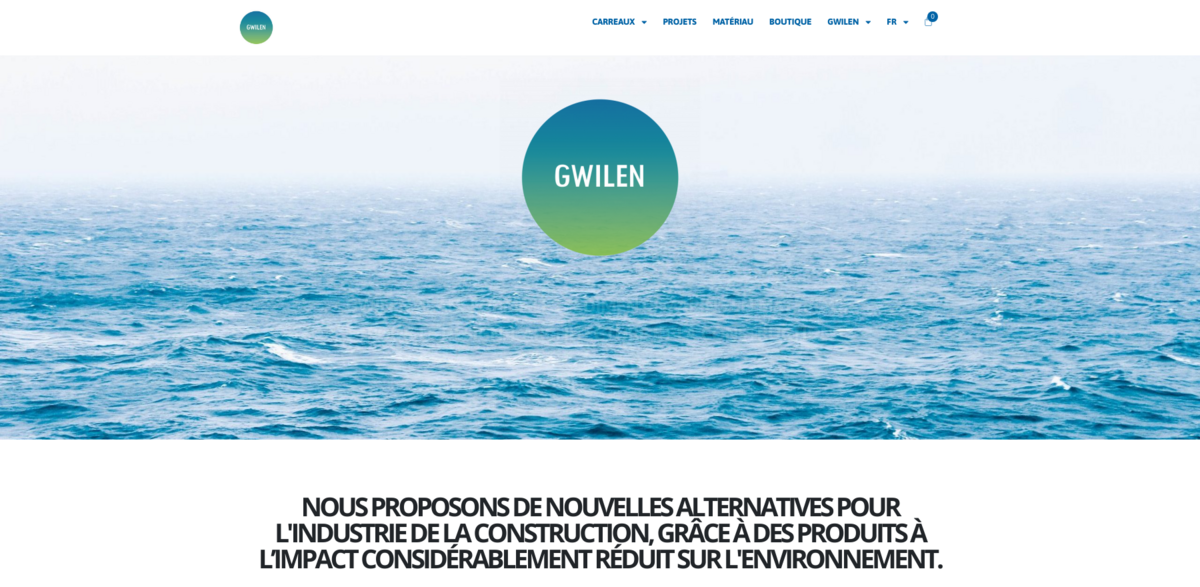What is the Project?
GWILEN transforms marine sediments into materials for design, architecture, and construction. This innovative project develops architectural products from marine resources, using dredged sediments that are recovered from the sea. The process cleverly bypasses the high temperature baking typical of traditional methods, resulting in energy savings and a significantly reduced environmental impact. Essentially, GWILEN is all about taking an underutilized resource—marine sediments that are currently 90% discarded at sea—and turning them into practical, beautiful, and sustainable materials that signal a new era for the construction industry. It is a smart approach that not only preserves marine biodiversity but also limits the use of finite resources, all while drastically lowering CO2 emissions.
Main Benefit
The key figures and facts of the project include:
- Utilization of dredged marine sediments that are 90% discarded at sea
- Energy savings through a process that avoids high temperature baking
- CO2 emissions reduced by 4 to 5 times compared to traditional terracotta production (LCA study 2021)
- Construction industry alternatives that are environmentally considerate
- Products currently produced in a workshop in Brest (Fr) with a focus on interior design applications
Innovative Production Process
By employing a unique technique, GWILEN retrieves marine sediments and processes them without resorting to the high temperatures that traditional productions demand… This alternative method practically gives a fresh twist to conventional manufacturing, making it not only more energy-efficient but also environmentally respectful. The process is truly innovative: instead of baking at very high temperatures that consume a lot of energy, it transforms these sediments through a process that significantly cuts energy usage. The result? Materials that maintain the aesthetic and functional qualities needed for design and architectural applications, all while being eco-friendly. There is something refreshingly bold about the way this process rethinks the role of marine resources.
Energy Efficiency and Sustainability
This project is driven by the desire to lower the environmental footprint of construction products… By eliminating the need for high temperature baking, GWILEN’s process saves considerable energy. This not only cuts down on resource consumption but also effectively reduces the carbon intensity associated with production. The method reflects a thoughtful emphasis on sustainability—a critical factor in today’s drive towards green technologies and responsible production practices. The production process, which uses existing marine sediments, highlights an approach that balances industrial innovation with environmental stewardship. In today’s climate, every kilowatt saved and every ton of CO2 reduced counts, setting a compelling example in the industry.
Commercialization and Future Developments
The project has already started to make its mark in the realm of interior design. Products developed from these innovative processes are now being commercialized in a workshop located in Brest. This marks the beginning of a broader vision where design, architecture, and construction converge with sustainability. Beyond interior design, the project continues to push its research and development efforts to formulate an industrial solution for architectural applications. This forward-thinking approach promises a ripple effect across the industry, opening up new alternatives for construction and setting a precedent for using recycled marine resources. It is as if the project is paving the way for a future where industry and nature work side by side in just the right balance.
Wider Industrial Applications
Beyond its current application in interior design, the potential of GWILEN’s approach is immense. The new alternatives for the construction industry could transform how materials are sourced and produced. The use of recovered marine sediments in place of conventional raw materials introduces an element of circular economy into a traditionally resource-intensive market. This is not just about a single product or process—it is about reimagining the whole lifecycle of construction materials. Such changes could ultimately influence production norms, regulatory standards, and even consumer perceptions regarding sustainability. It is exciting to see an approach that turns marine dredging—a process that might otherwise lead to environmental waste—into an opportunity for creativity and efficient production.
Project Impact
- SDG 9: Industry, Innovation and Infrastructure – enabling new innovative production processes within the construction industry
- SDG 12: Responsible Consumption and Production – promoting the recovery and reuse of marine sediments instead of discarding them
- SDG 13: Climate Action – significantly reducing CO2 emissions, with products emitting 4 to 5 times less CO2 than traditional terracotta
- SDG 14: Life Below Water – preserving marine biodiversity by limiting the extraction of marine resources and repurposing dredged sediments
Conclusion and Vision
GWILEN’s project stands out as a bold attempt to fuse the worlds of innovative engineering and sustainable design. The commitment to transforming marine sediments into valuable, eco-friendly materials shows a determination to use what is abundant and often wasted in a way that benefits society and the environment. Through a process that saves energy and drastically cuts CO2 emissions, the project really demonstrates how modern construction practices can evolve while respecting nature. This dynamic blend of technology, innovation, and environmental responsibility not only paves the way for future construction alternatives but also invites a broader conversation about resource management and sustainability in today’s world. It is a testament to the idea that sometimes, the solutions for a more sustainable future lie right beneath the surface—waiting to be rediscovered and repurposed in ways that propel industries forward with a minimal ecological footprint.





















